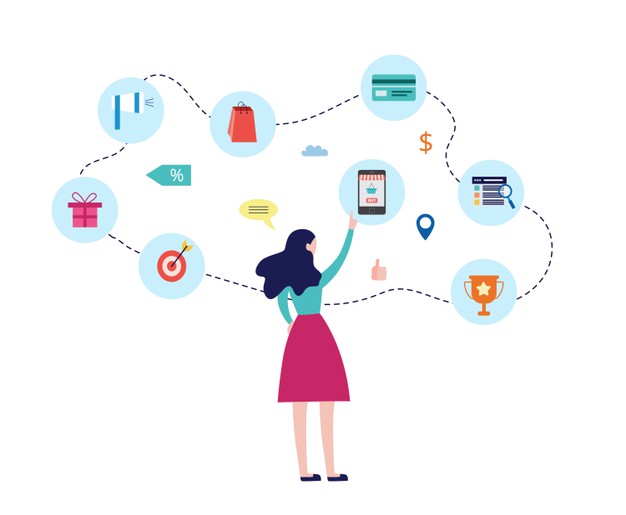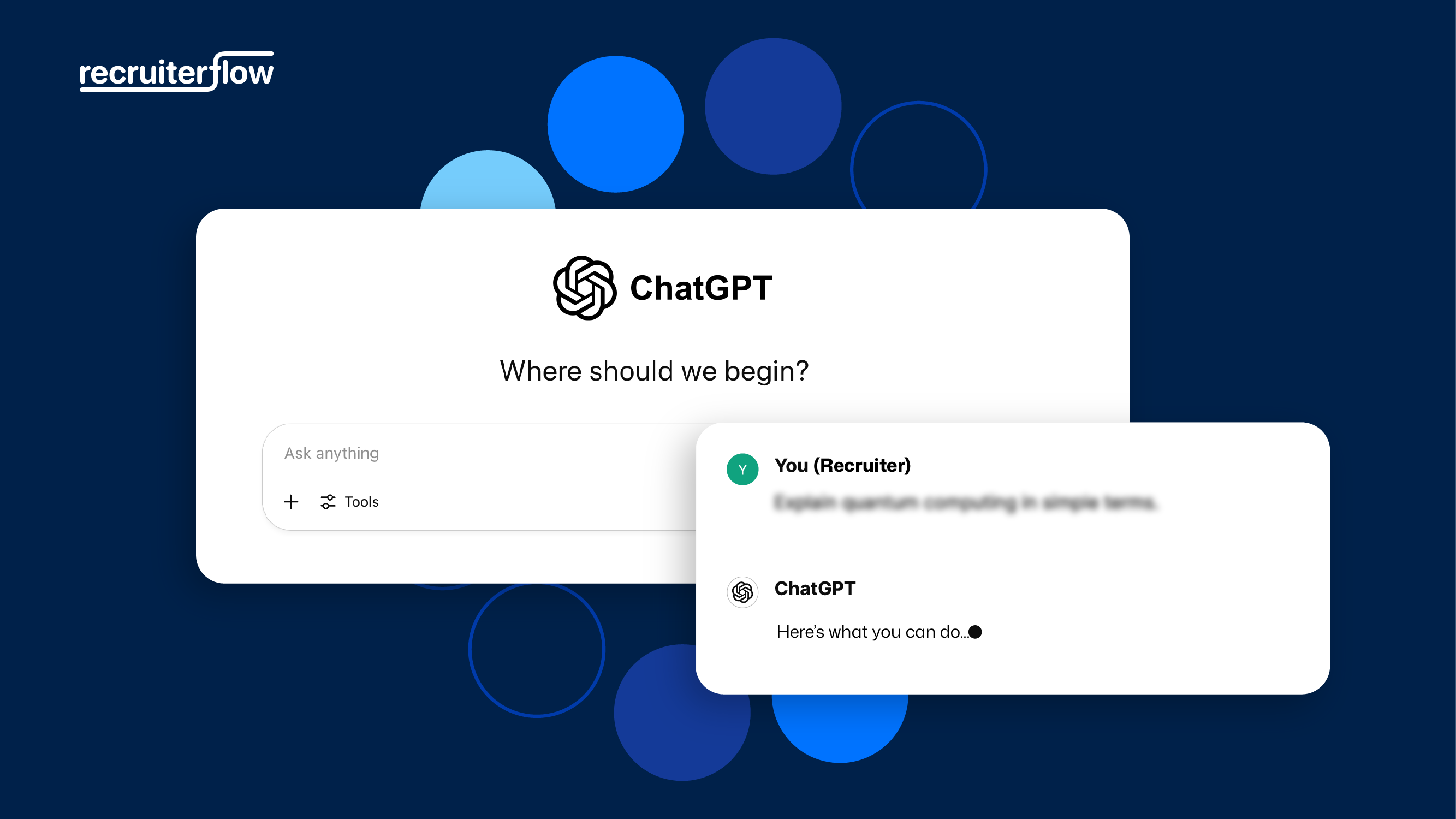
Understanding The Buyer’s Journey

What is the buyer’s journey?
The buyer’s journey is the process or stages that a prospect goes through, from identifying a need for your services to finally becoming a client. There are three distinct stages that a B2B buyer goes through – Discovery, Evaluation, and Decision.
Seems pretty straightforward. Doesn’t it?
Except, that when it comes to recruiting, hardly anything is ever that simple!
How do you make a potential prospect discover you? How do you make sure that when they are evaluating their options, they are asking the right questions that align with your USP? These are age-old questions that recruiting agency owners and operators have struggled with, and the answers lie in understanding what a typical buyer’s journey is.
Also, check Our Journey to 100+ customers in less than 100 days
In this article, we outline what a buyer’s journey is and why it matters to your recruiting agency or executive search business.
Why does the buyer’s journey matter?
Your prospects are going through a journey to identify that they have a problem, realizing that they need to solve the said problem, and then figuring out how to go about actually solving it.
Your job is to help and guide your prospects through this journey and help them make the right decision. Understanding the buyer’s journey is critical for you to scale your recruiting agency. The alternative is spending hours on cold calls and cold emails to just get one meeting with a prospect. Now, while you can’t stop your cold outreach efforts, by working on nurturing prospects through the buyer’s journey, your outreach will be much warmer and your results much better.
What are the stages of the buyer’s journey?
For recruitment or executive search world, the buyer’s journey can be split into 3 broad stages: Attract, engage and convert. While every prospect has their own unique journey to becoming a customer, these broad stages will help you understand your prospects better, give them exactly what they need according to the particular stage they’re in, and help them move in your direction.
The Attract stage
At the beginning of the buyer’s journey, your customer starts to become aware that they have a pain point and begin doing their own research about how to solve it. At this stage, it is important for you to put yourself in their shoes. You can use customer success software to segment your prospects based on their characteristics, interests, and behaviors to create targeted marketing campaigns and content.
Let’s take an example of a VP of Sales at a $50mn revenue software company. S/he isn’t really looking for a new recruiter to join their vendor list. That’s the last thing they have in mind. So, at this point, even if you literally stand in front of their office and shout at the top of your lungs, you are unlikely to get their attention.
Your prospect’s pain points can be quite different from the ones you think you are solving. At this stage, they have only just realized that they have a problem at hand. This realization can either be triggered externally (an external event makes them realize that they have a problem – bonus points if that trigger is you!) or internally (they reach that conclusion on their own). The important thing here is for you to really understand the problem that they are looking to solve.
Let’s continue with the VP of Sales at a $50mn revenue software company example and see the problems, as s/he sees them.
- S/he missed the last quarter’s revenue goals because they didn’t meet recruiting goals
- A mix-hire cost them their quarterly target achievements and caused overall low morale in the team
- S/he is looking at expanding into a new territory where they have no presence
- S/he is looking to go after a particular segment of the market but has no experience dealing with that segment.
See how How I built a team of 40 amazing people in 1 year?
Once you truly understand your prospect’s problems, you can craft content and a pitch that is better suited to their pain points. This also tied back to building an ICP in your recruiting sales process.
For a prospect at this stage, it is going to be useless to pitch them about your agency or services. They have just realized what the problem is but don’t know what the solution is yet. From here, the prospect now moves into the next stage – education. In traditional marketing 1×01, this is referred to as the engage stage.
The Engage Stage
This stage is where you want to play the long game. The prospect is not yet ready to make a purchase decision but is ready to define and understand their problem. This is where you come in.
Your job here is to create and deliver content that helps them define their problem and nudge them in the right direction. This content can be in the form of webinars, videos, podcasts or blogs, or email newsletters. This will help prospects connect with you and establish trust.
You are not yet directly pitching your services, but positioning yourself as an industry expert who can help them find exactly what they need. Your biggest competition here is inertia towards making a change – your prospect most likely already has a few product recommendations lined up that they are considering and your job is to introduce new options. Whether you are trying to showcase the features of a multi vendor marketplace platform or any other product or service, highlighting unique benefits and providing clear differentiators can help break through the inertia and persuade prospects to explore new possibilities. At this stage, they want to understand all the different options that they have and determine the pros & cons of each multivendor marketplace solution in this example. The goal is to start chopping away at options until you are the only one left and get them to see you as the only possible solution to their problem.
Your prospect is looking for a stage change. They want to go from point A to point B. Through your content, you can help them visualize their point B and how you help them achieve it. The call-to-action at this point is to invite the prospect to have a conversation with you and move into the final stage- The convert stage.
The Convert Stage
This is the final decision-making stage of the buyer’s journey where your potential customer makes a decision based on their research. Prospects are vetting specific approaches to the problem in the hopes of landing on the most appealing option (hopefully, you!). In this stage, you are pitted directly against your competitors, so you’ll have a leg up on them if you’ve already successfully marketed to the prospects during the early stages of the buyer’s journey.
Now’s your chance to talk about yourself and sell your services! Pitch your services, let the prospects know why they should choose you, and provide them with customer testimonials to reassure them that they’re making the right decision by choosing to work with you and close the deal.
The main objective of understanding the buyer’s journey is to understand how to create the right content through every stage and to present your prospects with solutions to their problems on as many platforms as you can. When you properly align your content, you will not only understand your customers a lot better, but you will also have more success in closing leads and landing more clients.
Recruitment




